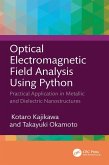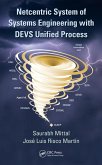Electromagnetic field analysis is often necessary to determine the optical response of materials with microscopic structures. Although the principles are widely described, the manual calculation and visualization of results are not and remain challenging. Python is the ideal language to use for this as it has a large functional library for visualizing analysis results and is suitable for programming beginners to use at low cost, so it has many advantages over languages like Fortran, BASIC, and C. Here, the authors introduce the application of Python to various electromagnetic field analysis scenarios in the field of nanophotonics. The first half of the book describes cases in which there is an analytical solution for the structure and addresses scenarios such as scattering and absorption in spherical and cylindrical structures and complex structures such as rotating ellipsoids, sphere-aggregated structures, and hemispherical structures. The second half describes methods including rigorous coupling wave analysis, finite-difference time-domain method and discrete dipole approximation for numerically solving varied structures. This book enables readers to conduct their own electromagnetic field analysis quickly, cheaply, and accurately without in-depth study of other complicated and time-consuming approaches or programs.
This book is invaluable for researchers and postgraduate students working in the fields of optics and photonics. Additionally, the contents are useful not only for those conducting electromagnetic field analysis but also those simulating physical, chemical, and biological phenomena.
Dieser Download kann aus rechtlichen Gründen nur mit Rechnungsadresse in A, B, BG, CY, CZ, D, DK, EW, E, FIN, F, GR, HR, H, IRL, I, LT, L, LR, M, NL, PL, P, R, S, SLO, SK ausgeliefert werden.









